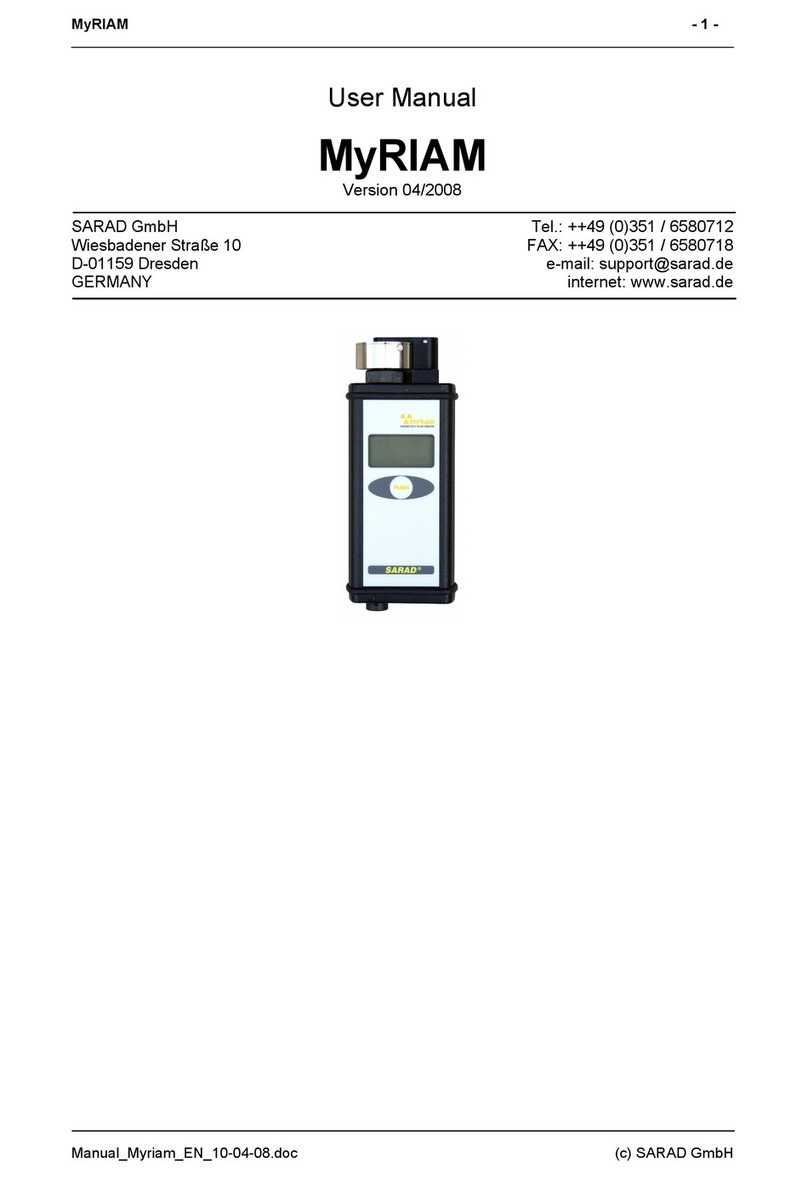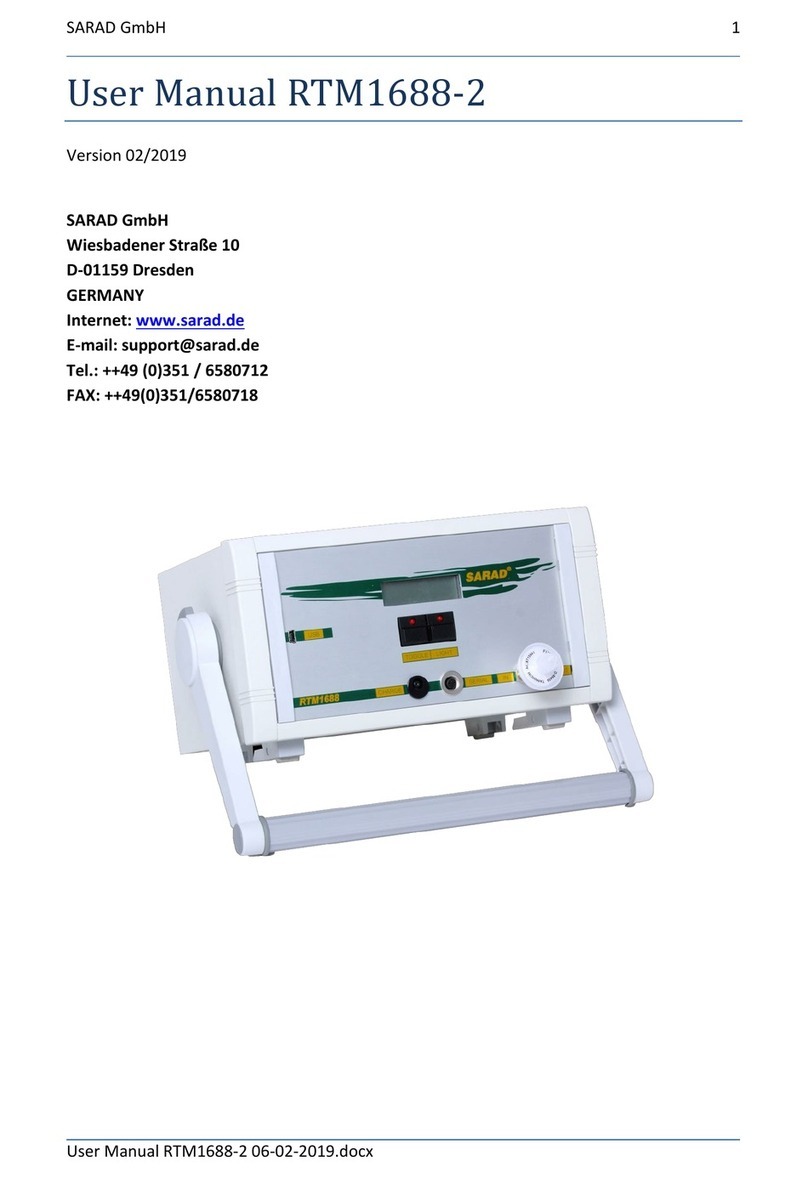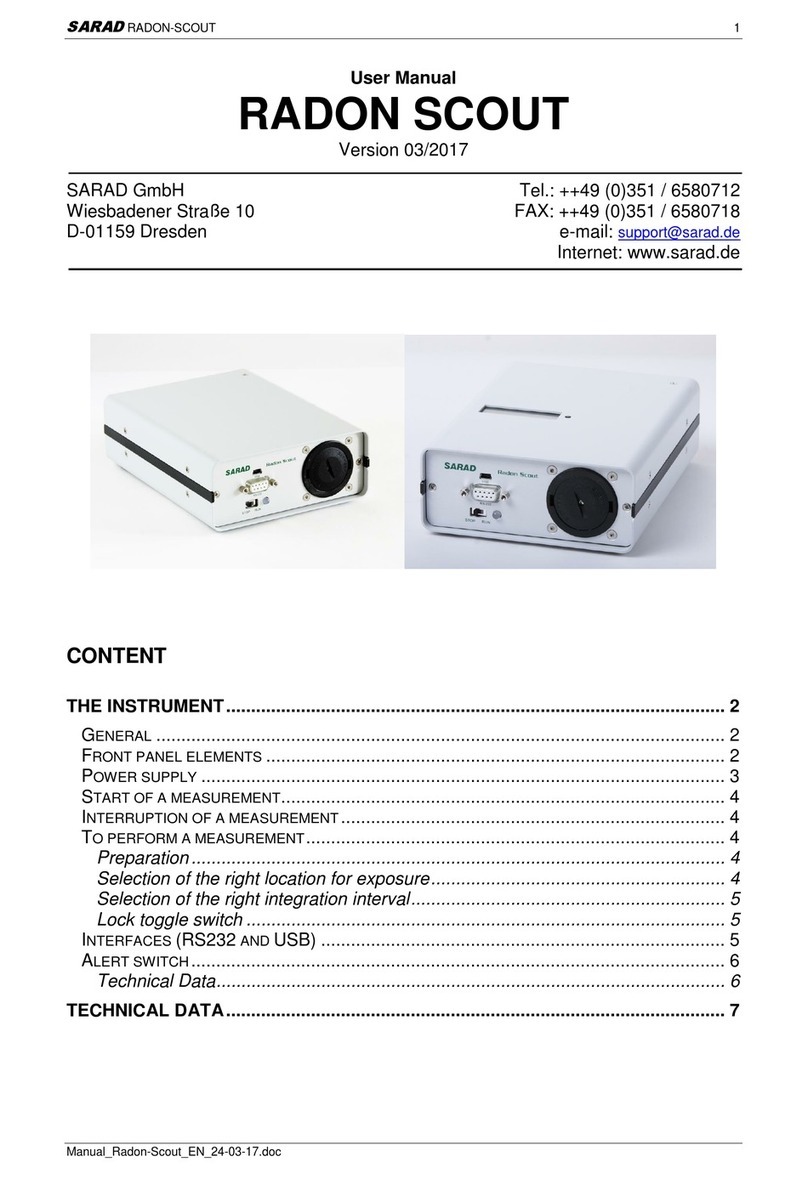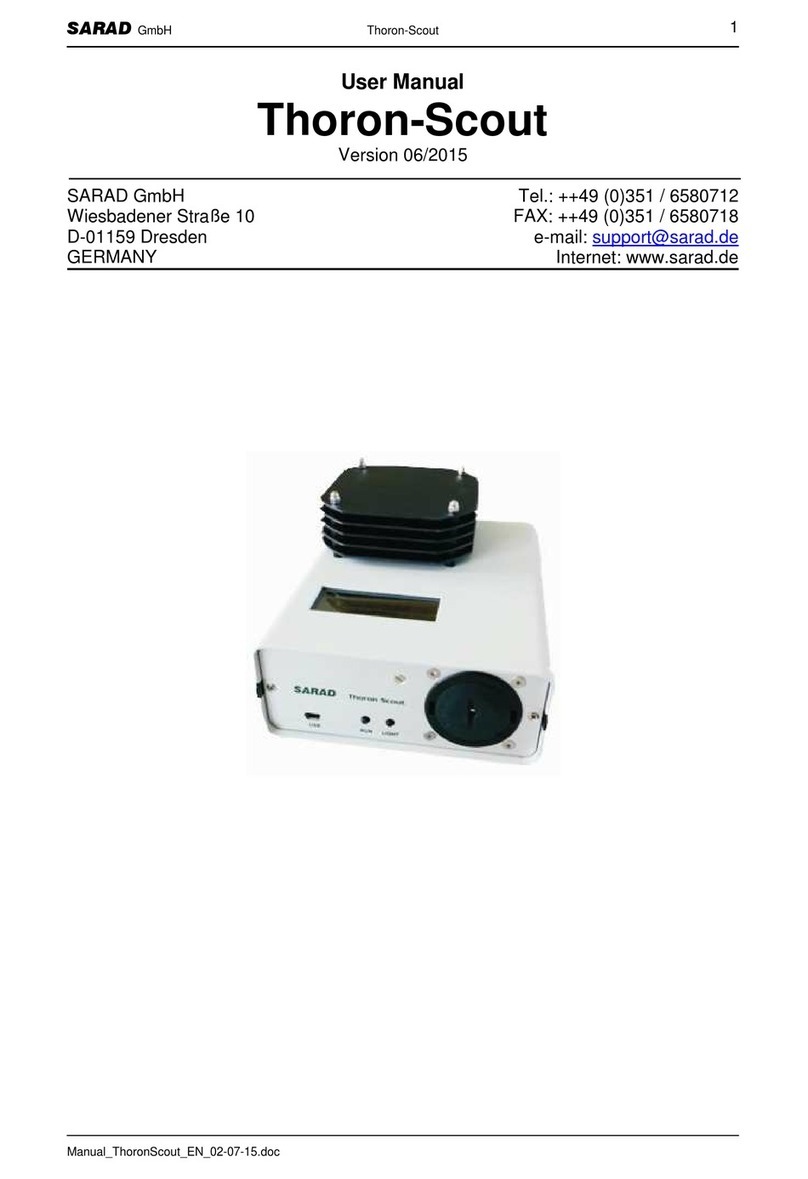
RTM 1688-2
2 Manual_RTM1688-2_EN_24-02-2023.docx SARAD GmbH 2023
Content
Applications ............................................................................................................................................. 3
Short Description ..................................................................................................................................... 3
Important Hint ......................................................................................................................................... 4
Theory of Operation ................................................................................................................................ 4
Operating of the Instrument ................................................................................................................... 6
Power supply ....................................................................................................................................... 6
Input Filter ........................................................................................................................................... 7
Water ingress protection (optional) .................................................................................................... 7
Carrying out a measurement............................................................................................................... 8
Adjustment of the sampling interval ................................................................................................... 9
Operation Modes ................................................................................................................................ 9
Pump ............................................................................................................................................... 9
Alarm ............................................................................................................................................... 9
Fast/Slow Mode ............................................................................................................................... 9
Sniffing ............................................................................................................................................. 9
Data Handling .................................................................................................................................... 10
Data Storage .................................................................................................................................. 10
Printing a protocol ......................................................................................................................... 11
Data transfer.................................................................................................................................. 12
Version RTM1688-2 MODBUS ............................................................................................................... 13
Standards ........................................................................................................................................... 13
Bus timing .......................................................................................................................................... 13
Error management ............................................................................................................................ 13
Hardware ........................................................................................................................................... 13
Implemented MODBUS functions ..................................................................................................... 13
Statistical Error (for non-mathematicians) ............................................................................................ 14
Error Prediction ................................................................................................................................. 14
Detection Limit .................................................................................................................................. 16
Service ................................................................................................................................................... 17
Disposal instructions ............................................................................................................................. 18
Technical Data ....................................................................................................................................... 19
Scope of delivery: .................................................................................................................................. 20
Optional accessories: ............................................................................................................................. 20
































